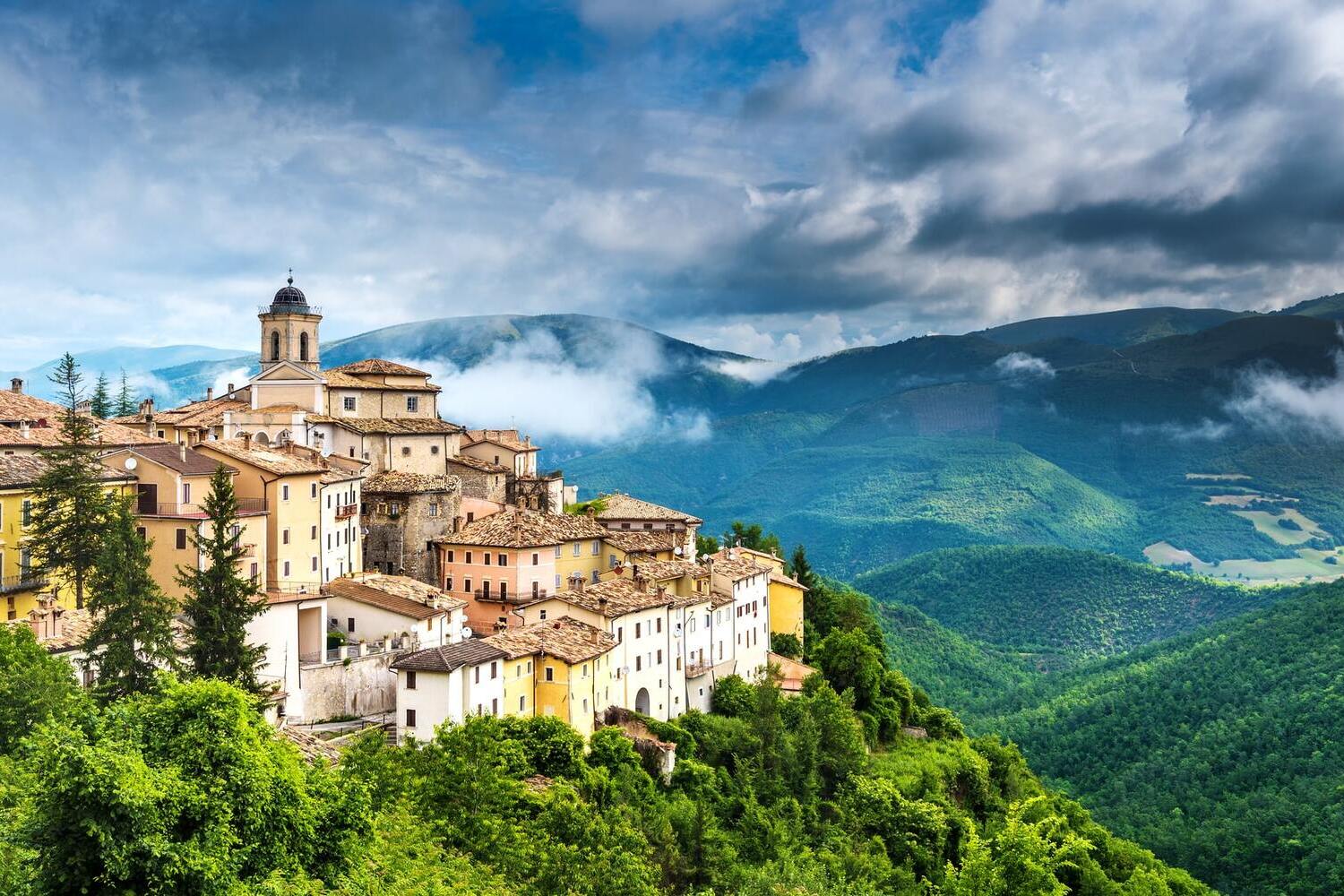Umbria, located in the very heart of Italy, is a region filled with charm and authenticity that often remains in the shadow of its more famous neighbor, Tuscany. However, it is this very sense of modesty that has helped preserve its natural beauty, historical legacy and cultural identity. With rolling hills, medieval towns, and ancient traditions, Umbria captivates visitors with its quiet grace. It is a place where spiritual heritage, cuisine, and art blend into a unique experience. Here are some fascinating and little-known facts about Umbria that you may not have heard before.
- Umbria is the only region in central Italy that does not border the sea or another country. This geographic isolation has helped it maintain its traditional way of life and strong regional identity.
- The capital of Umbria is Perugia, home to one of the oldest universities in Italy as well as a prestigious university for foreign students. It is also a thriving hub for art, history, and culture, with numerous galleries and museums.
- Perugia hosts the annual EuroChocolate Festival, one of the biggest chocolate-themed events in Europe. It is also the birthplace of the world-famous Baci chocolate, known for its soft hazelnut filling and love notes inside the wrapper.
- Umbria is famous for its black truffles, which grow in the forests around the town of Norcia. These truffles are considered culinary treasures and are harvested using specially trained dogs due to their underground growth.
- The town of Assisi is the birthplace of Saint Francis, the patron saint of animals and founder of the Franciscan order. His basilica is a UNESCO World Heritage Site and attracts thousands of pilgrims from around the world each year.
- Lake Trasimeno, located in Umbria, is the fourth-largest lake in Italy. It was the site of a famous battle in ancient times between Hannibal and the Roman army.
- Gubbio is a medieval hill town known for its stone buildings, narrow alleys, and a cable car that takes visitors to the top of Mount Ingino. Every year, the world’s largest Christmas tree made of lights is displayed on the hillside.
- Umbria is one of the least industrialized regions of Italy, which has helped preserve its landscapes in an almost pristine condition. It is often referred to as the green heart of Italy for its lush valleys and forests.
- In the town of Spello, residents celebrate the Infiorata Festival by creating elaborate floral carpets on the streets. These artistic works are made entirely of flower petals and are part of a religious procession.
- Norcia is known not only for its truffles but also for high-quality cured meats and sausages. It is also the birthplace of Saint Benedict, the founder of the Benedictine monastic order.
- Orvieto is a city built on a volcanic rock plateau with a stunning Gothic cathedral and an extensive network of underground caves. The city’s history goes back to the Etruscan civilization, and its skyline is truly breathtaking.
- Todi is often praised as one of the most livable towns in the world, thanks to its well-preserved medieval architecture and sustainable lifestyle. It offers a perfect balance between nature, heritage and modern living.
- The local Sagrantino grape variety produces one of Italy’s boldest and most structured red wines. This wine is grown almost exclusively in the area surrounding the town of Montefalco.
- Umbria’s historic towns frequently serve as filming locations for period movies and television shows. Their untouched appearance and timeless beauty attract directors from all over the world.
- The region lies in a seismically active area, and towns like Norcia have experienced several powerful earthquakes. Despite this, the local communities remain resilient and dedicated to preserving their cultural heritage.
- In Foligno, the traditional Giostra della Quintana takes place each year, where knights in historical costumes compete in skill-based events. This reenactment brings Umbrian history to life and draws enthusiastic crowds.
- The Marmore Falls in Umbria is one of the tallest man-made waterfalls in Europe, created by the ancient Romans in the 3rd century BC. It is a spectacular sight and a popular destination for visitors.
- The Renaissance painter Pietro Perugino, who was the teacher of Raphael, was born in Umbria. His works can be seen in churches and museums across the region, especially in Perugia and Spello.
- Umbria offers a wide network of cycling and hiking trails that pass through valleys, forests, and hilltop towns. It is an ideal destination for those seeking a slow-paced journey through Italy’s countryside.
- The region is also known for its artisanal crafts such as ceramics, woodworking and weaving. Deruta, a town in Umbria, is famous worldwide for its high-quality hand-painted pottery.
These amazing facts about Umbria reveal a region that is both historically rich and naturally stunning. It is a place where ancient traditions still shape daily life and where authenticity takes precedence over mass tourism. Whether you are drawn by the art, the food, the history or the landscapes, Umbria offers a truly unforgettable experience. Once you explore its quiet streets and rolling hills, you may find yourself enchanted by its timeless charm.





